Flat Network
1. Overview
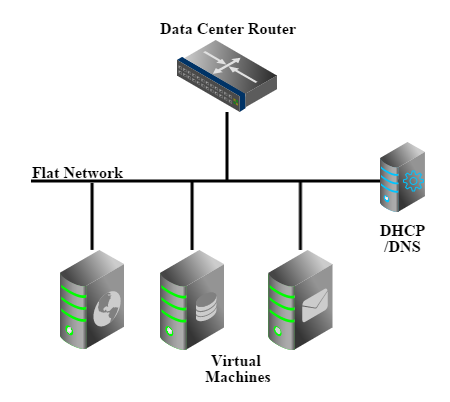
Flat networks are very popular for small businesses and internal networks which cannot be accessed by traffics out of data center. A flat network is very easy to deploy, usually has only one L2 broadcast domain, and machines on it can access the internet through the core router of the data center. In this example, we assume you already have a subnet that has been routed to the internet; we will create a few VMs and assign them IPs from that subnet.
2. Prerequisites
We assume you have followed Quick Installation Guide to install ZStack on a single Linux machine, and the ZStack management node is up and running. To access the web UI, type below URL in your browser (Please use latest Chrome or Firefox browser.):
http://your_machine_ip:5000/
To make things simple, we assume you have only one Linux machine with one network card that can access the internet; besides, there are some other requirements:
- At least 20G free disk that can be used as primary storage and backup storage
- Several free IPs that can access the internet
- NFS server is enabled on the machine (see end of this section for automatically setup NFS)
- SSH credentials for user root
Configure root user
The KVM host will need root user credentials of SSH, to allow Ansible to install necessary packages and to give the KVM agent full control of the host. As this tutorial use a single machine for both ZStack management node and KVM host, you will need to configure credentials for the root user.CentOS:
sudo su
passwd rootBased on those requirements, we assume below setup information:
- ethernet device name: eth0
- eth0 IP: 172.20.11.45
- free IP range: 192.168.0.230 ~ 192.168.0.240
- primary storage folder: /zstack_ps
- backup storage folder: /zstack_bs
Slow VM stopping due to lack of ACPID:
Though we don't show the example of stopping VM, you may find stopping a VM takes more than 60s. That's because the VM image doesn't support ACPID that receives KVM's shutdown event, ZStack has to wait for 60 seconds timeout then destroy it. It's not a problem for regular Linux distributions which have ACPID installed.Avoid DHCP conflict
Please make sure you don't have a DHCP server in the network because ZStack will spawn its own DHCP server; if you have a DHCP server in the network and cannot remove it, please use an IP range that is unlikely used by your DHCP server, otherwise the VM may not receive an IP from ZStack's DHCP server but from yours.3. LogIn
open browser with URL(http://your_machine_ip:5000/) and login with admin/password:

4. Create Zone
click 'Hardware' in the left sidebar and then click 'Zone'to enter the zone page:
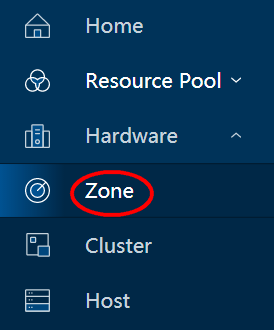
click button 'Create Zone' to open the dialog:
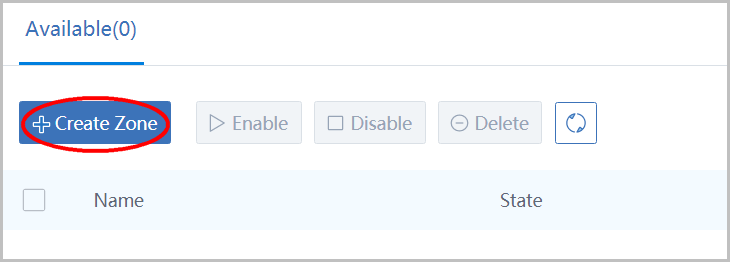
name your first zone as 'ZONE1' and click button 'OK':
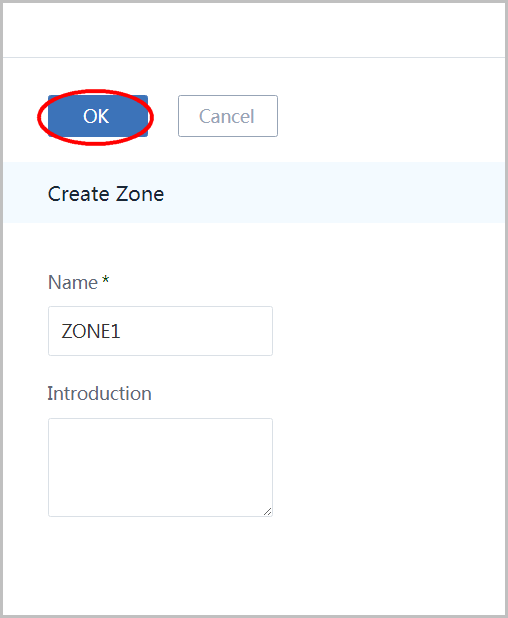
5. Create Cluster
click 'Cluster' in the left sidebar to enter the cluster page:
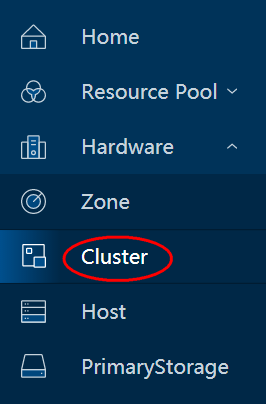
click button 'Create Cluster' to open the dialog:
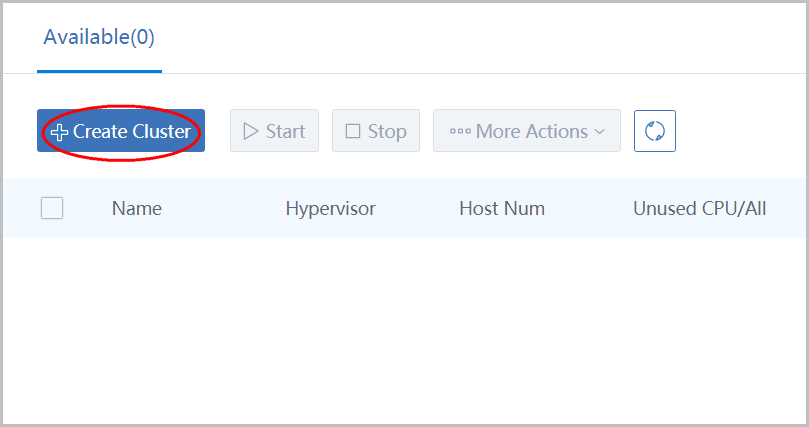
name the cluster as 'CLUSTER1' then click button 'OK':
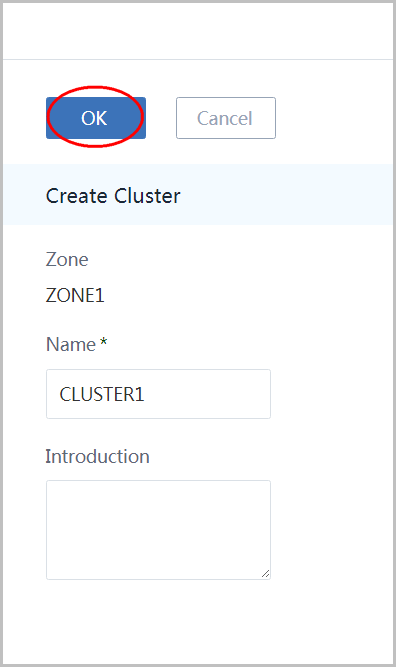
6. Add Host
click 'Host' in the left sidebar to enter host page:
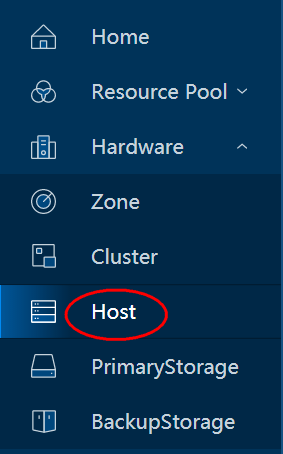
click 'Create Host' button to open the dialog:
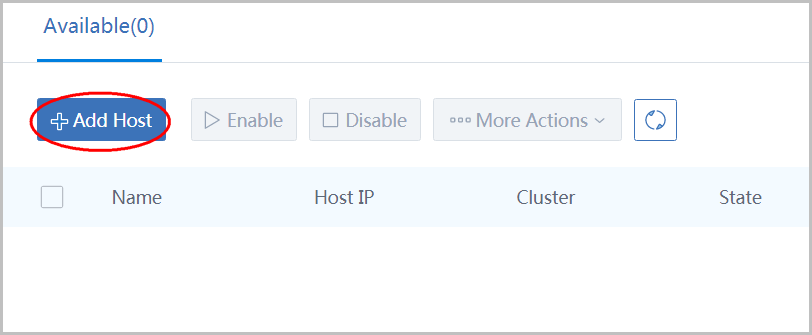
- name the host as 'HOST1'
- select cluster(CLUSTER1) you just created
- input the host IP(172.20.11.45)
- input the ssh port(22)
- the most important thing: give SSH credentials for user root
- click 'OK' button
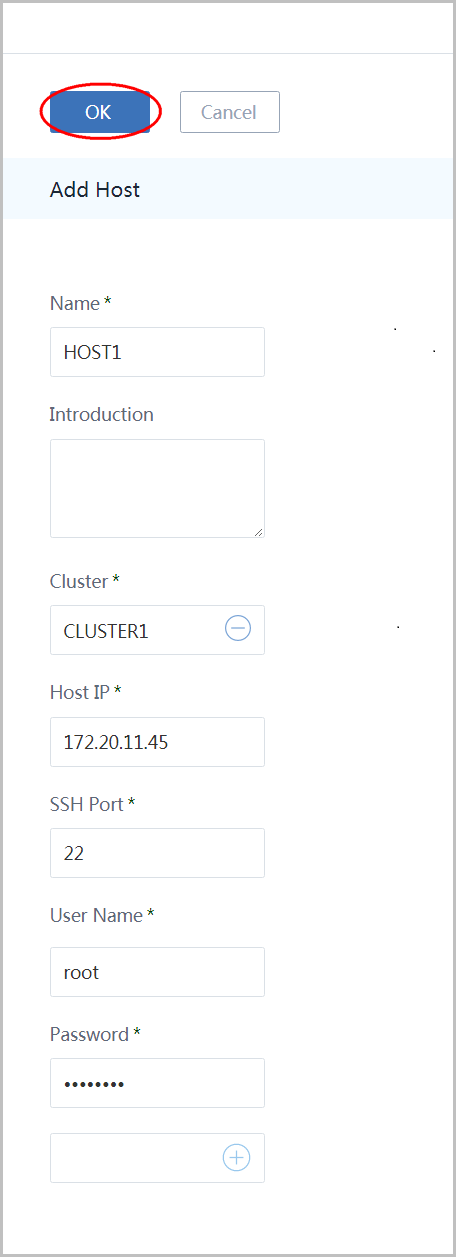
A little slow when first time adding a host
It may take a few minutes to add a host because Ansible will install all dependent packages, for example, KVM, on the host.7. Add Primary Storage
click 'PrimaryStorage' in the left slider to enter primary storage page:
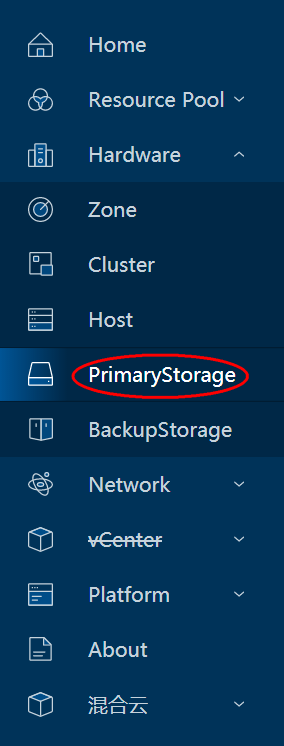
click button 'Add PrimaryStorage' to open the dialog:
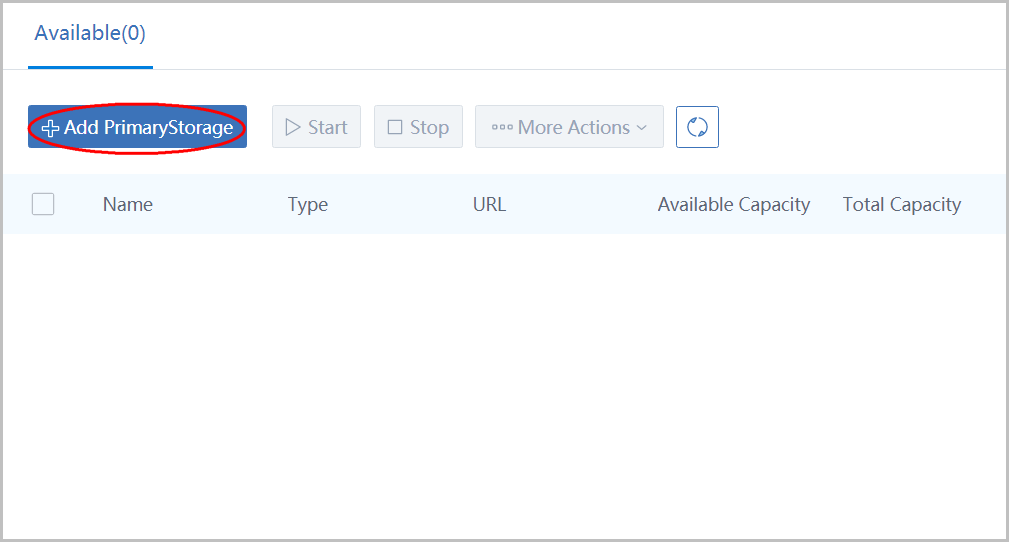
- name the primary storage as 'PS1'
- select type 'LocalStorge'
- input url(/zstack_ps)
- select cluster 'CLUSTER1'
- click button 'OK'
Format of URL
The format of URL is exactly the same to the one used by Linux mount command.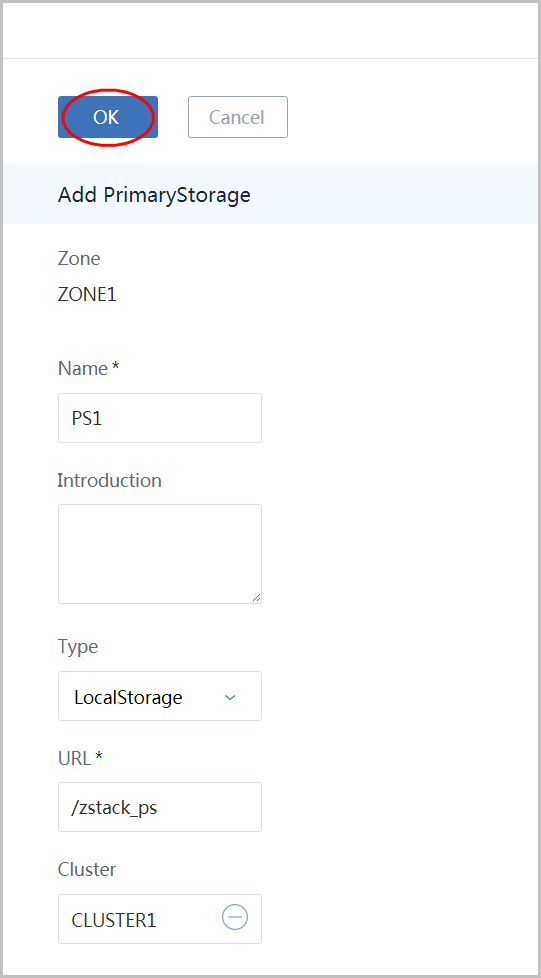
It's actually multiple API calls
You will see two API finishing notification because it actually calls two APIs: addPrimaryStorage and attachPrimaryStorageToCluster.8. Add Backup Storage
click 'BackupStorage' in left sidebar to enter backup storage page:
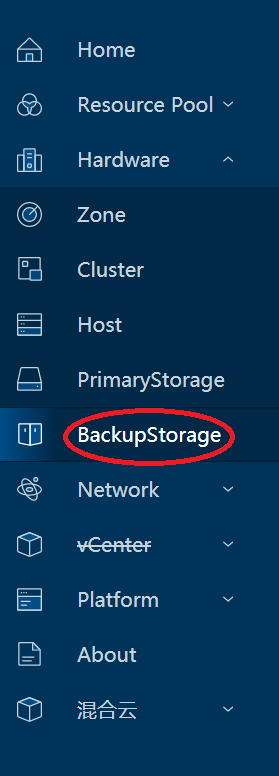
click button 'Add BackupStorage' to open the dialog:
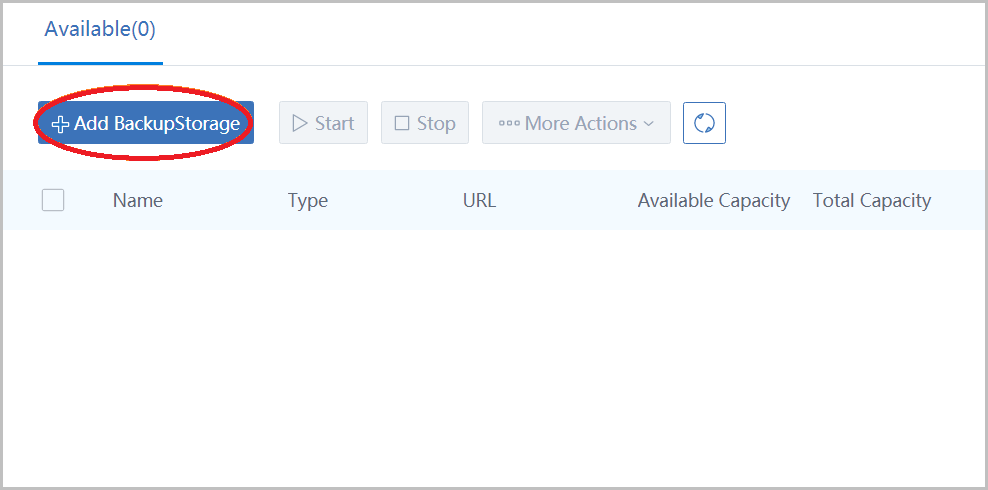
- name the backup storage as 'BS1'
- choose type 'Sftp'
- input IP(172.20.11.45) in host IP
- input URL '/zstack_bs' which is the folder that will store images
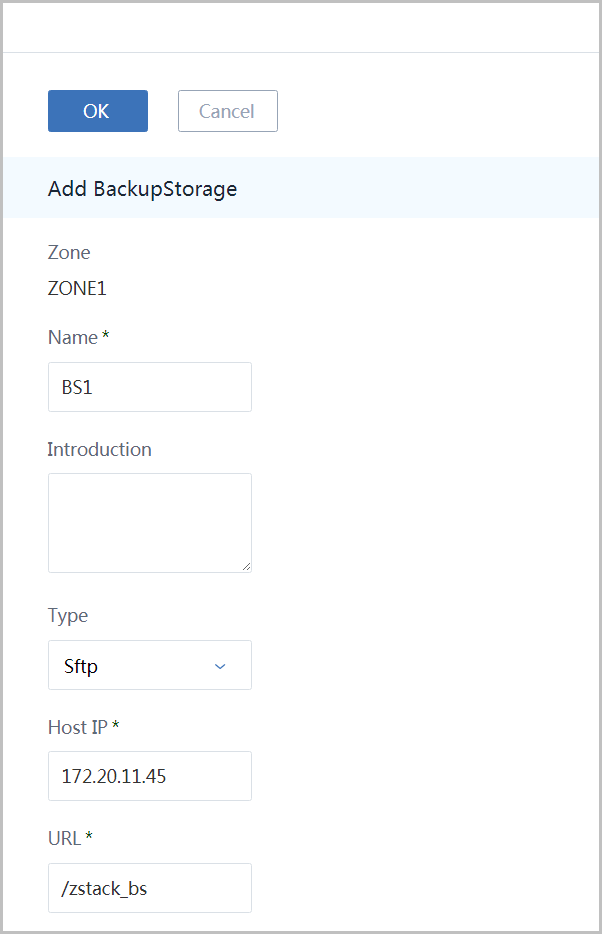
Input ssh port(22), input SSH credentials for user root, and click button 'OK':
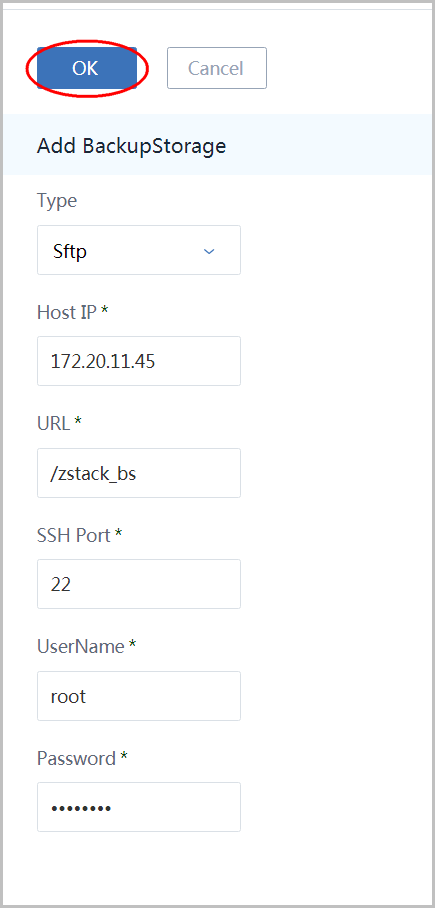
9. Add Image
click 'Resource Pool' in left sidebar and click 'Image' to enter image page:
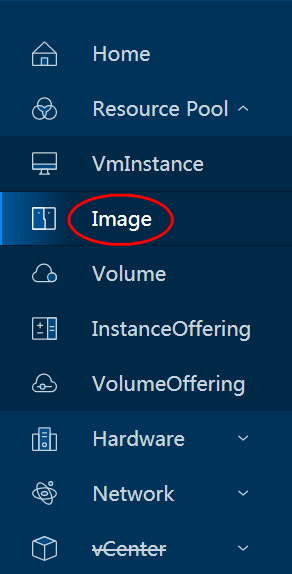
click button 'Add Image' to open the dialog:
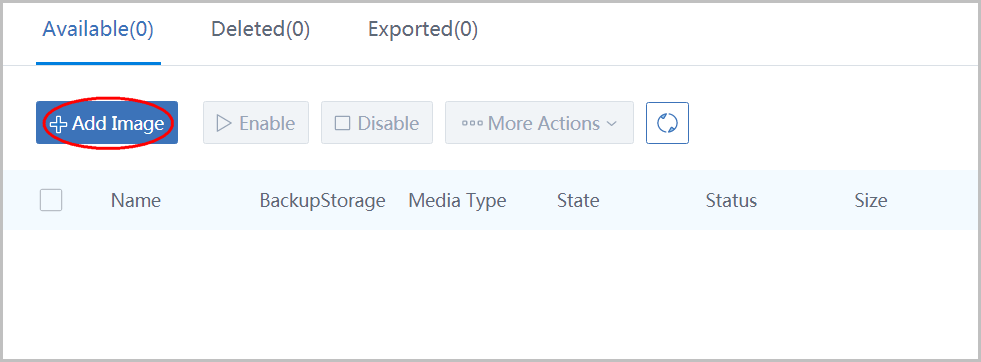
- name the image as 'Image1'
- select media type 'Image'
- select platform 'Linux'
- input URL http://cdn.zstack.io/product_downloads/images/zstack-image.qcow2
- select BackupStorage 'BS1'
- click button 'OK'
this image will be used as user VM image.
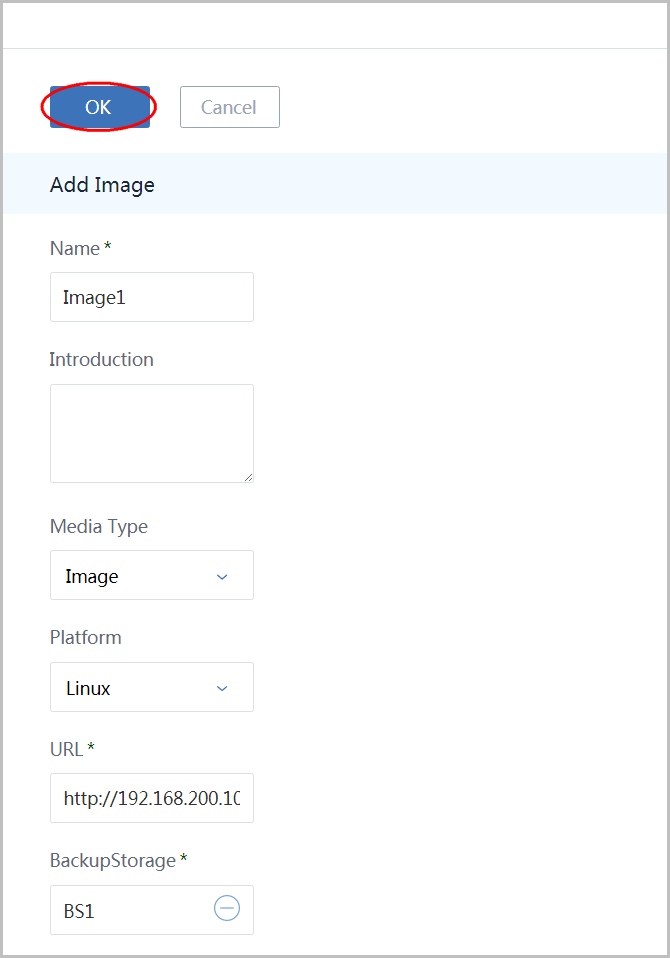
click 'Create Image' button again to add the virtual router image:
- name the image as 'VRouter'
- choose media type 'ISO'
- choose platform 'Linux'
- input URL http://cdn.zstack.io/product_downloads/vrouter/zstack-vrouter-2.0.0.qcow2
- choose BackupStorage 'BS1'
- click button 'OK'
Fast link for users of Mainland China
.................................http://cdn.zstack.io/product_downloads/vrouter/zstack-vrouter-2.0.0.qcow2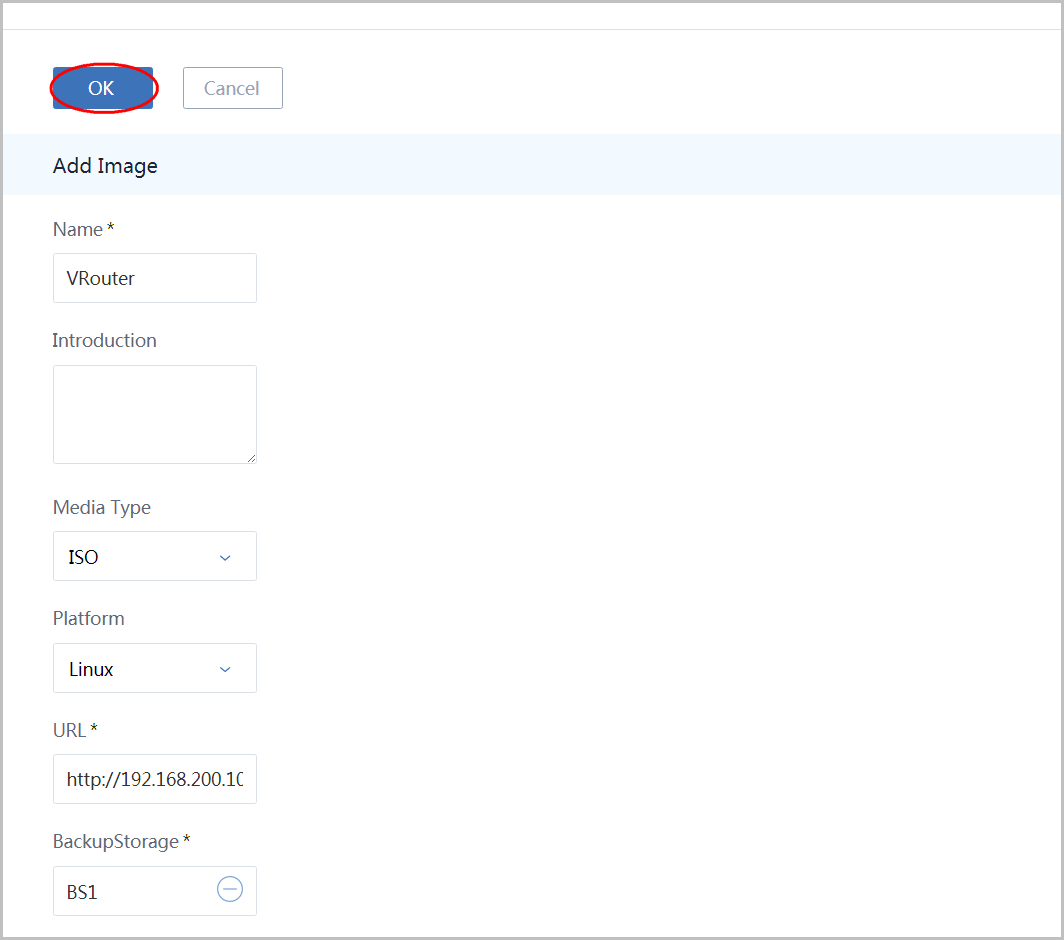
Cache images in your local HTTP server
The virtual router image is about 432M that takes a little of time to download. We suggest you use a local HTTP server to storage it and images created by yourself.10. Create Flat L2 Network
click 'Network' in left sidebar and click 'L2Network' to enter L2 network page:
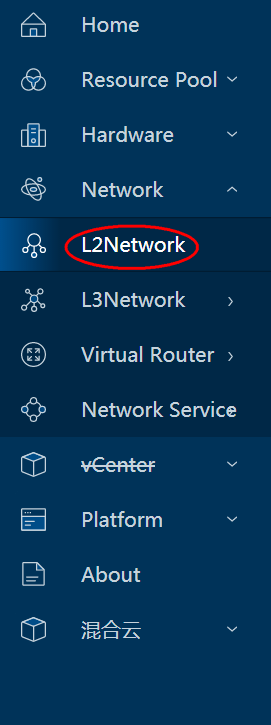
click button 'Create L2Network' to open the dialog:
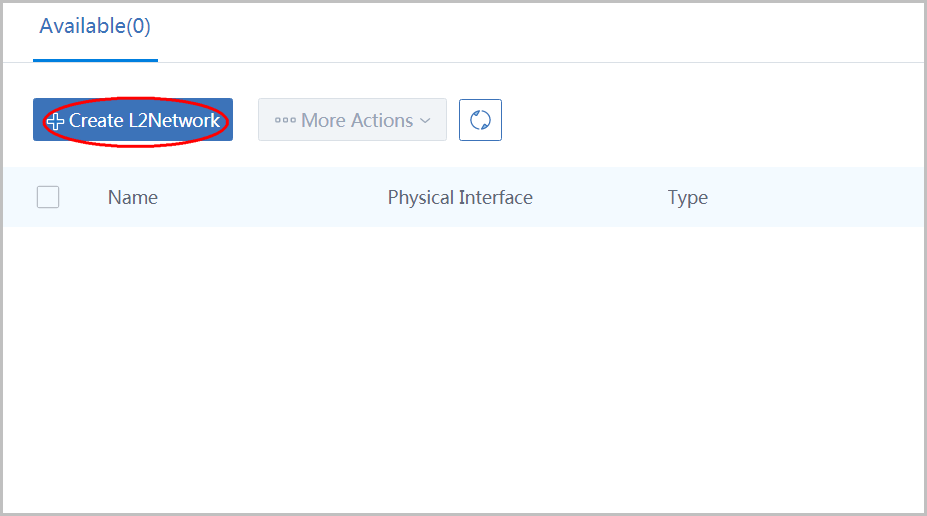
- name the L2 network as 'FLAT-L2'
- choose type 'L2NoVlanNetwork'
- input physical interface as 'eth0'
- select cluster 'CLUSTER1'
- click button 'OK'
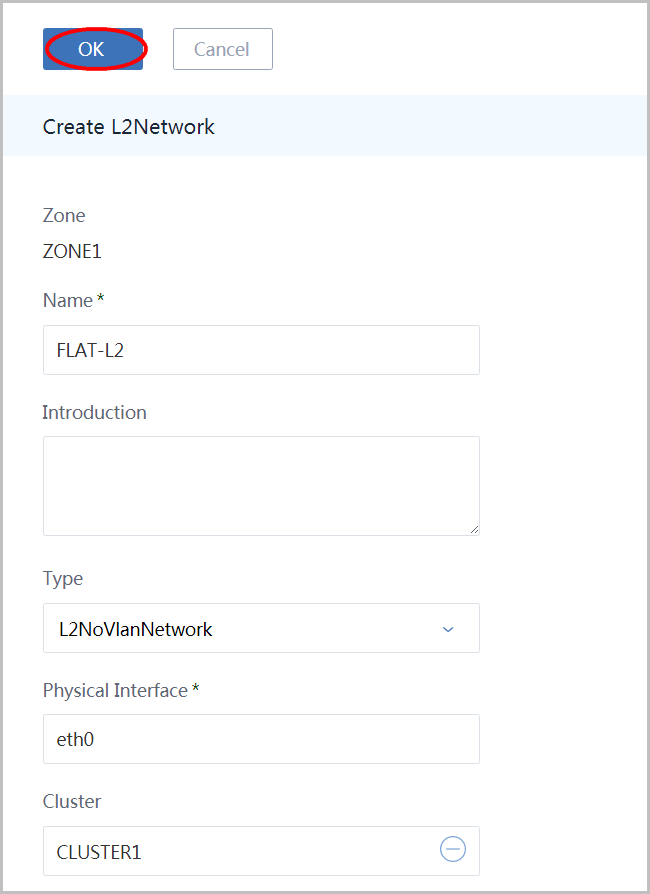
11. Create L3 Network
click 'L3 Network' in left sidebar to enter L3 network page:
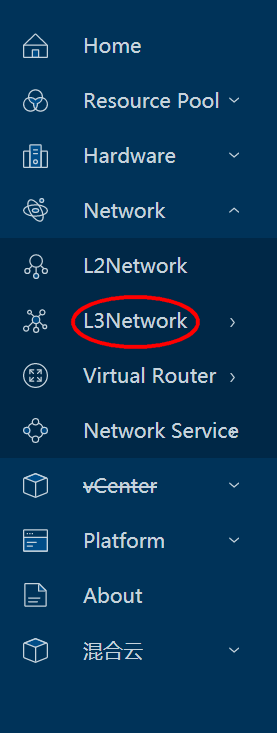
click button 'Private Network' to open the dialog:
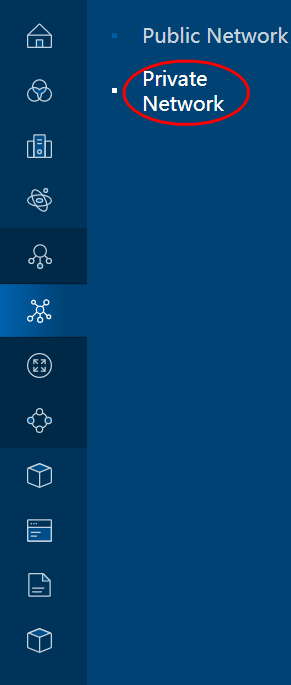
Name the L3 network as 'FLAT-L3' , select L2 network(FLAT-L2) and choose 'Flat Network ':
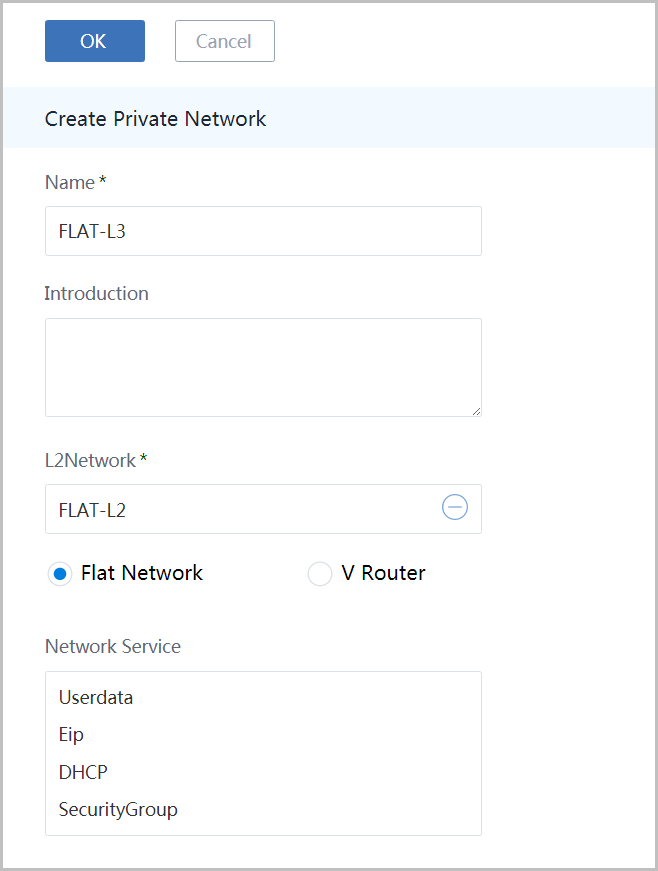
- choose method 'IP Range'
- input start IP '192.168.0.230'
- input end IP '192.168.0.240'
- input netmask '255.255.255.0'
- input gateway '192.168.0.1'
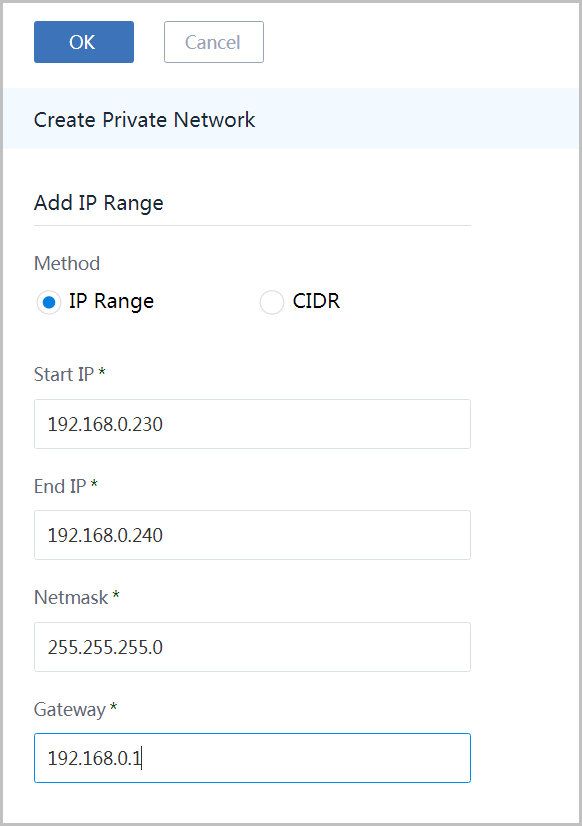
input DNS '8.8.8.8' and click button 'OK' to add the IP range:
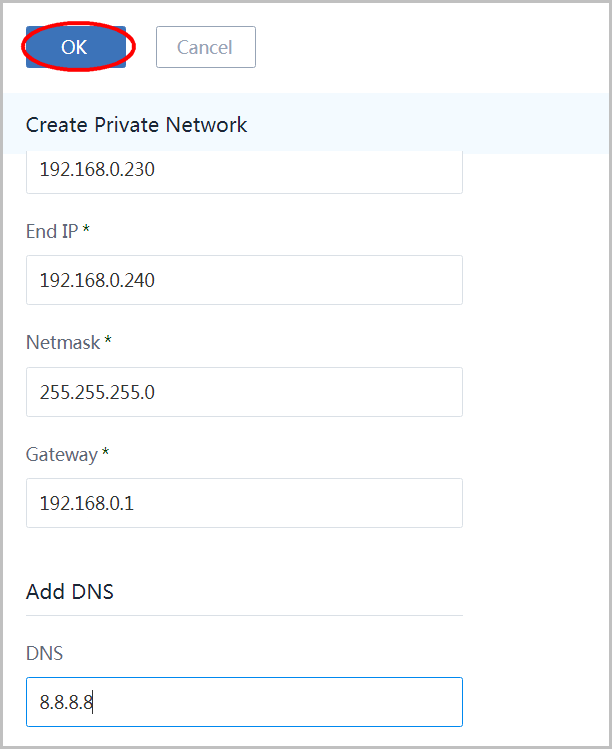
12. Create Virtual Machine
click 'Resource Pool' in the left sidebar and click 'VmInstance' to enter VM instance page:
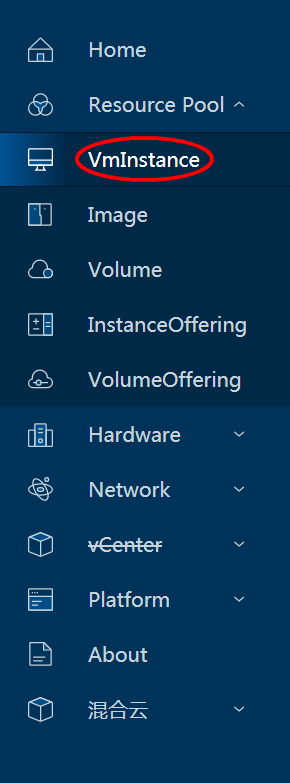
click button 'Create VmInstance' to open the dialog:
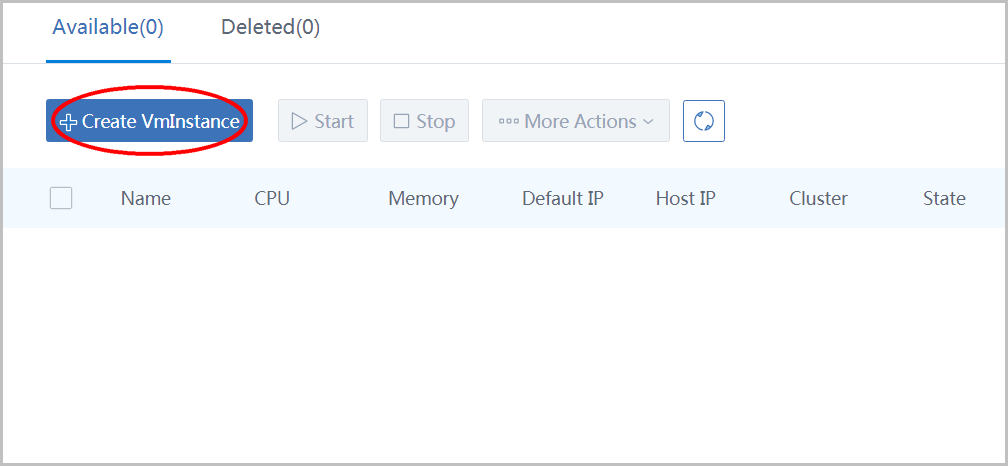
- choose Type 'Single'
- input name as 'VM1'
- choose instance offering 'IO1'
- choose image 'Image1'
- choose network 'FLAT-L3'
- click button 'OK'

The first user VM takes more time to create
For the first user VM, ZStack needs to download the image from the backup storage to the primary storage and create a virtual router VM on the private L3 network, so it takes about 1 ~ 2 minutes to finish.once the VM is created successfully, click button 'Action' then click item 'Console' to open VM's console:

in the popup window, login the VM by username: root; run command 'hostname', you should see the hostname 'zstack''; and command 'ifconfig' should show the IP address which is in the flat network.
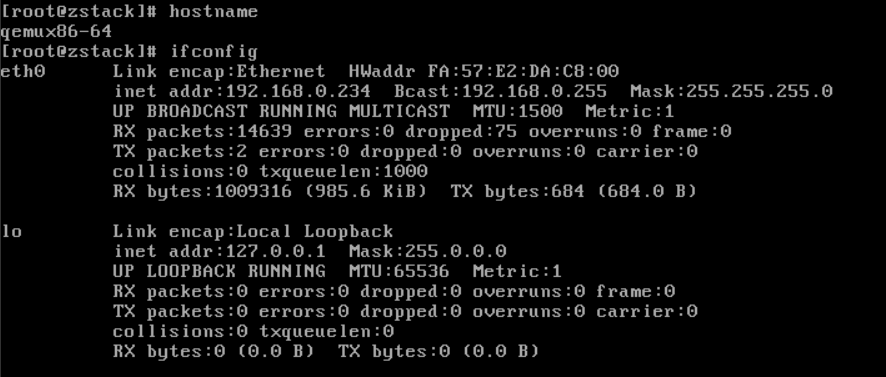
ping google.com, it should succeed:

repeat above steps to create vm2 and vm3. They should all get IP address and should be able to reach the internet.

Subsequent VMs are created extremely fast
As the image has been downloaded to the image cache of the primary storage and the virtual router VM has been created, new VMs will be created extremely fast, usually less than 3 seconds.Summary
In this tutorial, we showed you how to create a flat network in ZStack. For more details about ZStack's L3 network, visit L3 Network in user manual.